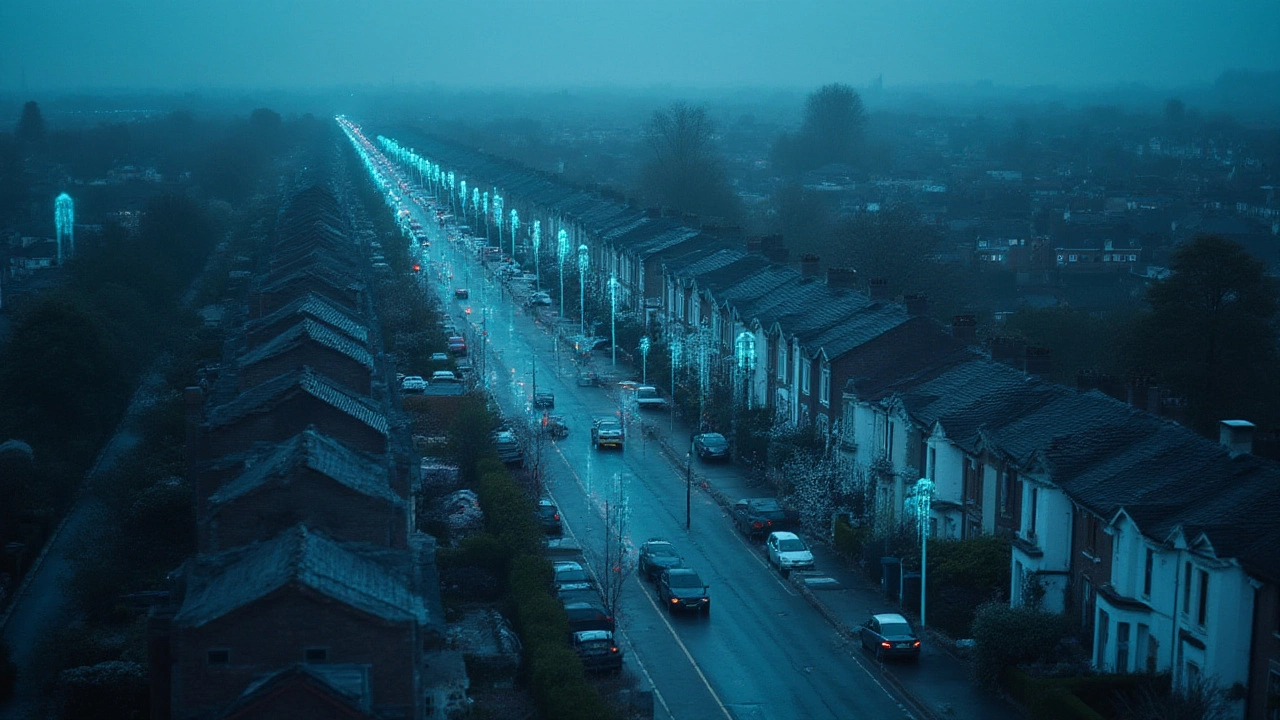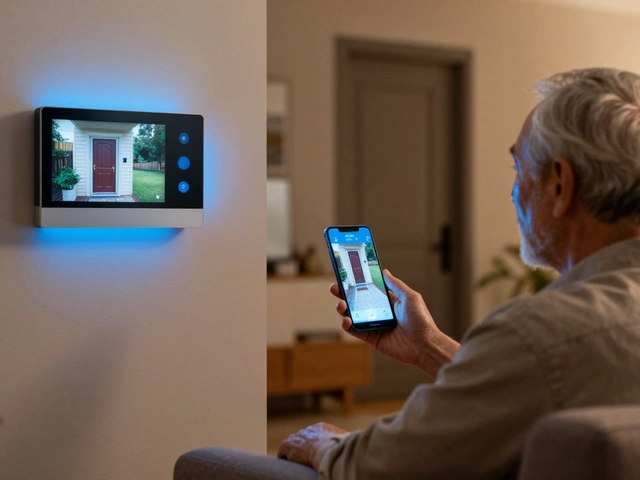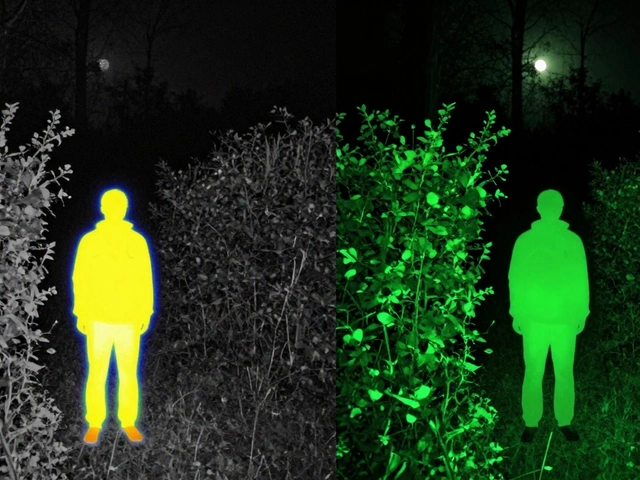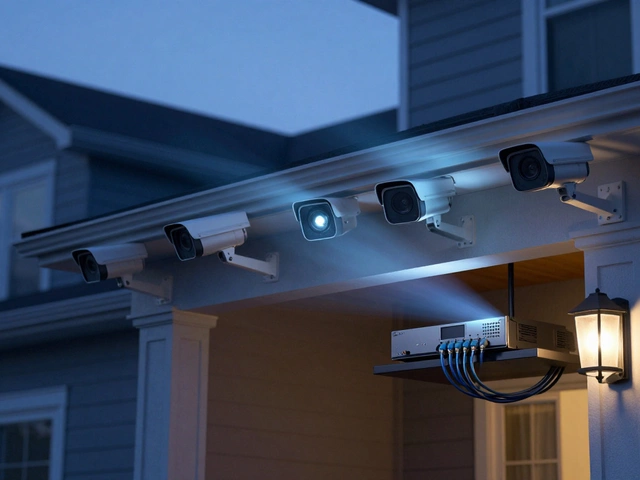Your neighbor brags about checking his porch from work on his phone. Your friend just installed indoor Wi-Fi cameras “for peace of mind.” But there’s a side to Wi-Fi security cameras that hardly ever makes the family group chat—a set of downsides hiding in the fine print. And for anyone thinking about bolting more of these eyes onto their walls, there are risks you can’t unsee once you spot them.
How Wi-Fi Security Cameras Turn Convenience into a Double-Edged Sword
The idea behind Wi-Fi security cameras is simple: ditch the wires, slap the cameras up anywhere, and get alerts or live footage on your phone. That sounds sharp—until you realize every major upside is tied to a glaring caveat.
Think about installation. Getting rid of wires doesn’t mean forgetting about network headaches. Wi-Fi signals can struggle through thick walls, old bricks, or home electronics that crowd the airwaves. Result? Some folks end up with pixelated video feeds, weird buffering, or cameras that go offline when the Wi-Fi hiccups. A 2024 survey by HomeShield Security found 37% of users ranked ‘signal drops’ as their top frustration—with doorbell and garage cameras failing more frequently in houses over 2,500 sq ft.
And sure, app alerts let you know what’s happening at home. But what app are you giving access to? Every notification, video stream, or saved clip is heading somewhere—usually a server outside your home. Sometimes, it’s sitting in the cloud with only a password (often a weak one) keeping it safe. Hackers know this. In 2023, a leak from a major camera brand let over 150,000 camera feeds get exposed on underground forums. Suddenly, that baby monitor’s footage was seen around the globe.
If you’re thinking “But I’m not a target,” consider this: most camera snoops aren’t after you by name. They scan the web for devices using default passwords or out-of-date software. Couple of keystrokes, and they’re peeking inside bedrooms, garages, or backyards. A study from the University of Texas in late 2023 found that 21% of Wi-Fi cameras tested were running outdated firmware with known vulnerabilities. Translation: one in five could open a door for hackers unless the owner checks for updates regularly—which most people don’t.
Then there’s the classic Wi-Fi issue: outages. Lose electricity, lose your router. Lose your router, and your cameras are just expensive plastic. Some models have built-in memory for local recording, but not all. How much footage gets lost with every brownout or internet hiccup? If you’re relying on them for real-time alerts, a simple service interruption means you’re flying blind just when you need them most.
Oh, and about ‘guaranteed’ cloud storage? Terms often change, prices go up, or recordings randomly vanish after a set period. A lot of customers only realize their evidence is gone when it’s too late. Pro tip: Always check what you’re actually getting for your subscription fee—compare how long video clips are stored, and if you get notifications when something goes wrong with the camera or the cloud connection.
Let’s get real: Wi-Fi security cameras are only as good as your entire home network. Got laggy internet or frequent router reboots? Your cameras are hostages to those same problems. And if you’ve ever had your Wi-Fi go down because your neighbor’s microwave was on, you already know how unpredictable invisible signals can be.
The bottom line? The very freedom you get from wireless cameras comes bundled with some not-so-convenient tradeoffs. Convenience, meet compromise.

The Unspoken Privacy Gamble: Who’s Watching What—and Who Can Snoop?
Installing a smart camera at home feels personal. But every time you connect one to Wi-Fi, it starts a chain reaction that leads far beyond your living room. Your video might be encrypted—but the companies that run these platforms see a lot more than you’d expect. In one eye-opening 2024 Consumer Reports investigation, four major camera brands sent analytics (like which rooms were filmed, how often, and what type of alerts were triggered) back to their servers. Many users had no idea their indoor movements were adding to corporate data piles.
Most camera companies promise privacy, but security breaches continue. Maybe you heard about the infamous “Ring” incident: families terrorized by strangers yelling through intercom features? That was 2022, and it led to a full review of privacy policies everywhere. Yet, weak user passwords, reused logins, or phishing attacks make headlines every few months. You think you’re checking on your pets—but someone else might be checking on you.
Cloud footage is another minefield. Some services store video abroad; others keep it local. Each has pros and cons. If clips are on remote servers, what happens if the company gets hacked? If you store footage only at home, what if someone steals your router or hard drive? Either way, a lot of people don’t set up two-factor authentication—a serious no-no in 2025. It’s as essential as locking your front door. Here’s a tip: set unique, long passwords and turn on every privacy feature you can find. Also, review which cameras are pointed where (keep them out of bedrooms and bathrooms).
Don’t forget about data retention. Companies usually keep footage from a couple of days to a few weeks unless you pay more. Some delete video automatically, but others hang onto it. Always check those policies before clicking “agree.”
Ever heard of geofencing? A cool trick—until it isn’t. Wi-Fi security cameras use location data to turn recording on/off based on your phone’s location. Convenient, but it means your movements get tracked and sometimes shared with third parties. In early 2024, a privacy watchdog found that certain camera brands were selling anonymized location data to ad brokers. Suddenly, your camera is a data source, not just a sentry.
The conversation about facial recognition is getting louder. Some new cameras use AI to recognize frequent visitors or even pets versus strangers. That sounds sci-fi, but it raises big red flags. Where is that facial data kept? Can it be deleted? Does the system misidentify people? A 2023 MIT review found these AI systems wrongly flagged neighbors as “intruders” 3 times in 100—annoying if you’re getting 3am alerts because of your buddy dropping by for a late-night pizza.
All this combines to make Wi-Fi security cameras a bit of a privacy gamble. Unless you’re hands-on with your settings, and picky about what records where, there’s a real risk your ‘security’ ends up feeling more like surveillance.
| Breach/Incident | Year | Cameras Exposed | Outcome |
|---|---|---|---|
| Verkada Cloud Breach | 2021 | 150,000+ | Footage leaked from schools, businesses, homes |
| Ring "Swatting" | 2022 | Unknown | Hackers accessed live feeds, harassed homeowners |
| Undisclosed User Data Sale | 2024 | Multiple Brands | Analytics data sold to third-party ad brokers |
Privacy is only as good as the weakest link in your setup—or your camera vendor’s policy.

Reliability, Lag, and the Real-World Performance Issues Nobody Warns You About
Marketing for Wi-Fi cameras loves to show crisp, live video wherever you are. They barely mention the reality: wireless cameras can lag, drop out, or drain your phone with useless alerts. And that’s just the tip of it.
The first thing that catches people off guard is bandwidth. Every camera sends video through your home Wi-Fi, eating into whatever speed you have. Got several cameras? Add a few smart TVs, laptops, and phones—and things bog down fast. You start getting buffering on movie night, or worse, clips from your cameras arrive late—sometimes minutes after the action already happened. Stats from an August 2024 PCMag Tech Lab test: each HD camera ate up 1-3 Mbps of upload during peak streaming. That might sound tiny, but in a house with modest internet (say, 10 Mbps upload speeds or less), two or three cameras can throttle your whole network.
Wi-Fi cameras are picky about placement. Too far from the router or behind metal cabinets, and they can’t connect consistently. Then there’s interference: microwaves, cordless phones, baby monitors, even your neighbor’s Wi-Fi, all cloud things up. Ever tried viewing live camera footage during a storm only to see “connection lost”? Not rare, and not fun with outdoor models. One big tip: if you must rely on wireless, invest in a mesh Wi-Fi system for even coverage, and consider wired power lines for mission-critical spots.
Motion detection is next. People expect useful, timely alerts—but almost every camera gets this wrong. Cheap models confuse shadows, bugs, or car headlights with suspicious movement. Annoying, since dozens of false alerts each day mean you’ll start ignoring notifications altogether (which is exactly when you’ll miss the real thing). Higher-end models use AI or customizable zones—draw boxes over doorways, turn off alerts on swaying trees—but it takes trial and error to get it just right.
Night vision is another selling point, but the real-life performance varies. Budget cameras promise ‘1080p infrared’ but deliver blurry grayscale smudges after dark. Rain or fog? Most security cameras can’t focus well through water droplets or glare. A practical tip here: don’t trust box specs alone—search for video samples from real users in homes similar to yours before buying.
And yes, security cameras get noticed. They’re supposed to! But Wi-Fi models can announce themselves by chiming or lighting up when you walk by. Creepy, if you want discretion. Also, anyone with a Wi-Fi jammer (easy to find online) can knock most household cameras offline. While this is rare, it’s not impossible—police in California busted a burglary ring in early 2025 using jammers to blank out Wi-Fi cameras before breaking in.
Home automation is slick till it isn’t. Cameras meant to work with smart assistants—like Alexa or Google Home—sometimes get “confused” after app updates, or connections fail when you change your Wi-Fi password and forget to update each device. One New York homeowner’s Reddit post went viral after his 5-camera setup bricked itself after a routine password change—leaving his front entrance unwatched for three days until he manually reset every unit.
Weather is another curveball for outdoor models. Heatwaves, snow, or even relentless humidity can fry sensitive parts or fog up lenses. While most claim to work down to -4°F or up to 120°F, real-life stints on porches or garages tend to push equipment past its limits—shortening its lifespan.
Battery-powered Wi-Fi cams are a popular pick, but battery drain is real. Frosty nights or lots of motion mean changing or charging every few weeks (or even days). Wired options avoid that, but then you compromise on placement flexibility.
And don’t forget: if the app goes down or the company folds (it’s happened!), your camera could go dumb in an instant. Before you buy, check if your model supports ‘RTSP’ or similar standards for recording to your own hardware—so you’re not tied forever to the manufacturer’s cloud.
At the end of the day, Wi-Fi security cameras offer cool tricks—but they don’t always keep their promises when it counts. If you’re serious about security, double-check if you need wireless after all, or if old-school wired cameras (mixed with wireless for convenience) get you better sleep at night.






